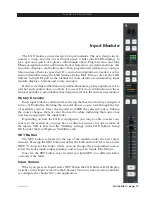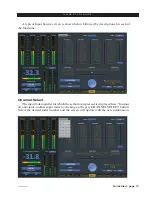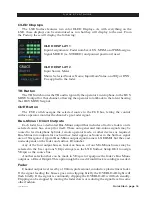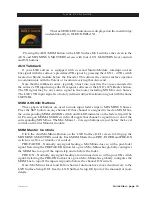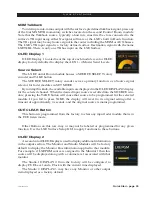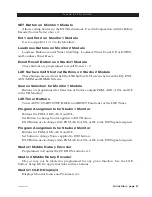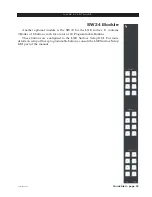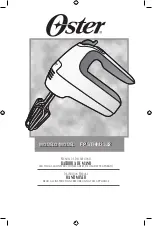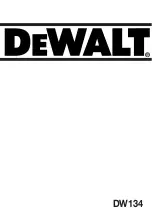
Quick Start - page 18
LXE / Feb 2018
Q U I C K S T A R T G U I D E
Output Section
Each LXE control surface has two Monitor
modules, and one Studio module. There are
two Studio module types, either can control
any of the Monitor feeds. Additional Monitor
and Studio Modules can be added if needed.
As we discussed in the Input section, the
LXE surface is fully customizable down to
each button/switch, OLED Screen and Rotary
Encoder. The descriptions provided here are
what the LXE Surface will have programmed
from a factory default perspective.
Although they are individual modules,
they are designed to function as a group.
For example, one of the four AUX Send1 ‑
AUX Send 4 Level controls is located on the
top of each module. In this guide we will
describe the controls and functions of these
modules as a group starting from the top of
the modules and going down.
Rotary Encoder
This encoder is programmed from the
factory to be the Master level control for the
AUX Bus.
AUX Busses
The control surface has four AUX busses,
which can be used to create record feeds, extra
mix-minus busses, etc. The Aux Send 1- 4
Assign buttons are just below the Encoder
on the Studio module. Input to an Aux Send
control can also be accessed using the Aux
assignment section of the main Input screen of
the LXE Surface GUI. Each AUX BUS feed
has Mode, Pre‑fader and Pre‑On switches,
and On/Off controls. A virtual AUX BUS
knob indicates relative level. Use the physical
Aux SEND knobs on the top of modules or
the mouse on the screen to adjust levels. All
adjustments can be saved to a Channel, a
Source, an Event, or a Preset.









